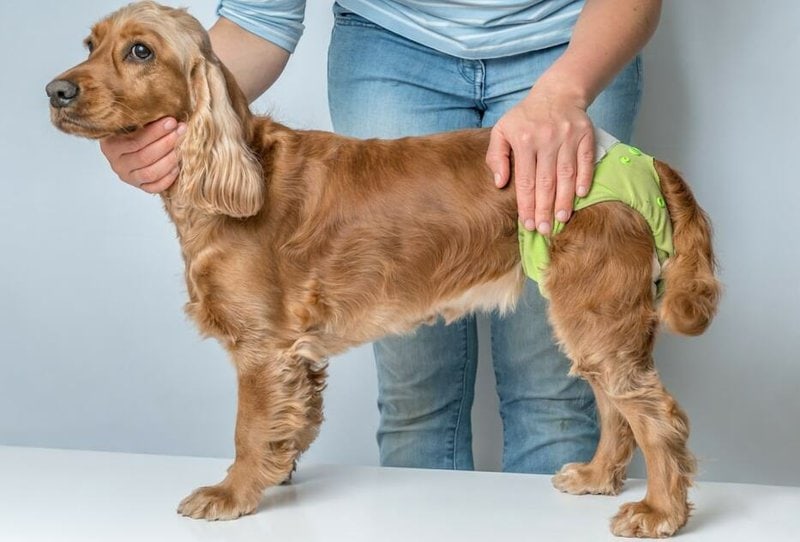If you’re new to caring for female dogs, you may be wondering if, like their human mommies, do they also have monthly periods? Female dogs do not have monthly periods, instead what they have is the estrous heat cycle.
Unlike human mommies, dogs do not stop going into heat, meaning that menopause is not part of their reproductive system. Most dogs enter their first heat cycle at the age of 6 months and reach sexual maturity thereafter. As dogs get older, the interval from the last mating phase of the estrous heat cycle to the next gets extended.
In some cases when you did notice that your dog did not go through the estrus phase (second phase) of the estrous heat cycle, issues such as silent heat or hypothyroidism could be the reason.
Male dogs, on the other hand, do not go into heat. But, once they are already fertile, they can mate all year round which usually begins at 6 months of age.
Today, we’d be focusing on the estrous heat cycle of your dog and tackle issues such as the reasons why your dog does not go into heat. It’s also interesting to touch on the topic of how you can calm your male dog when your female dog gets into heat.
Do Female Dogs Ever Stop Going Into Heat?
No, healthy female dogs do not stop going into heat. This means that these dogs can continue to get pregnant even at old age (of course, with complications). In addition, the heat cycle continues even for older female dogs but the interval gets farther apart and fertility decreases.
There are cases though when a female dog does not go into heat or has a fertility problem which will be discussed in the subsequent section.
For now, we’d talk about the estrous heat cycle which has 4 phases: proestrus, estrus, diestrus, and anestrus.
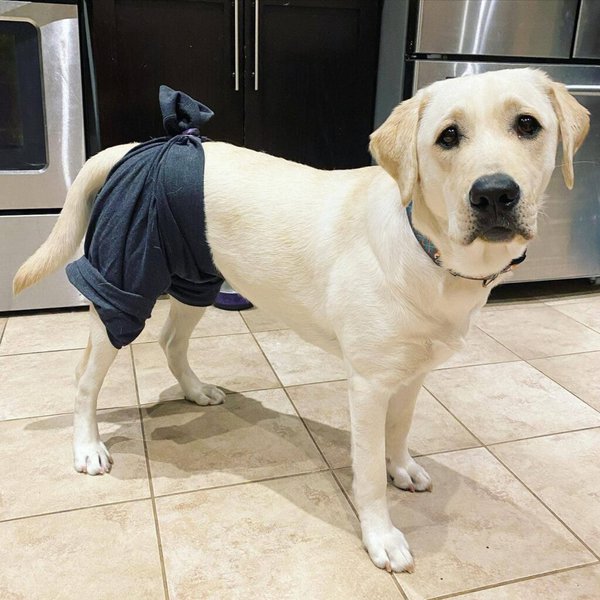
The Estrous (Heat) Cycle
Depending on the breed of your dog, the first heat cycle usually begins at 6 months, with the smaller dog breeds getting into heat earlier than the larger dog breeds. Once the heat cycle has started, you can expect it to occur every 6 months or thereabouts and continue until old age.
Known as proestrus, the first phase usually lasts for 9 days or longer. This is the time when her body is preparing for a possible pregnancy. Some of the obvious signs are the swollen vulva and bloody discharge. At this point, she may be in heat but she will not be receptive to male advancements, at least, not just yet.
It is in the second phase known as estrus when your dog begins to show interest in mating. Her vaginal bloody discharge is reduced or may even stop. You’d also see your dog licks her genital organ frequently and will urinate more as a sign of territorial marking.
Plus, she’d position her tail on the side (tail flagging) as a way of letting a male dog know of her willingness for mating. The estrus phase lasts for an average of 9 days.
The third phase, the diestrus phase, comes after her fertile days and usually lasts for 2 months. At this point, her estrogen level declines while the progesterone level increases 3 to 4 weeks at the start of the diestrus phase and then declines by the end of this phase.
If the mating is successful, expect her to deliver her pups in about 63 days.
The fourth phase is the anestrus which is known as the recovery period. This is the time when the ovaries are inactive and the uterus recovers for another heat cycle and possible pregnancy, regardless of age. This phase normally lasts for 4 months.
How Long Is Your Dog In Heat?
On average, it lasts for 21 days, that is from the start of the proestrus until the end of the estrus phase. The estrus phase is also referred to as standing heat because that is the time when your female dog is willing to mate and stand up for successful copulation.
To determine if she is no longer in heat, refusal to stand up for copulation is one of the signs. If you want to be absolutely certain that she is not in heat anymore, you may opt for a vaginal cytology exam.
Can You Stop A Female Dog From Going Into Heat?
Yes, you can stop your female dog from going into heat through a safe surgical procedure known as spaying.
So, at what age should your dog undergo a spaying procedure? What if you want to breed your dog, how many times should you breed her in her lifetime? Let’s look at the answers to these questions below.
Is Spaying Safe For Your Dog?
Yes, this medical procedure that involves removing the ovaries and the uterus is safe for your dog. Apart from not having puppies any more that can contribute to overpopulation and neglect, the other benefits of spaying are:
- It reduces the risk of pyometra which is a life-threatening infection of the uterus.
- It saves you from guarding your dog against male suitors each time she’s into heat.
- It eliminates bloody mess around the house.
Plus, contrary to popular belief, spaying a dog won’t change her demeanor. She’ll remain playful and loving.
On top of that, behavioral changes like aggression as a result of fluctuating hormones are eliminated. Spaying results in a more consistent and eliminates the hormone-driven guarding behaviors.
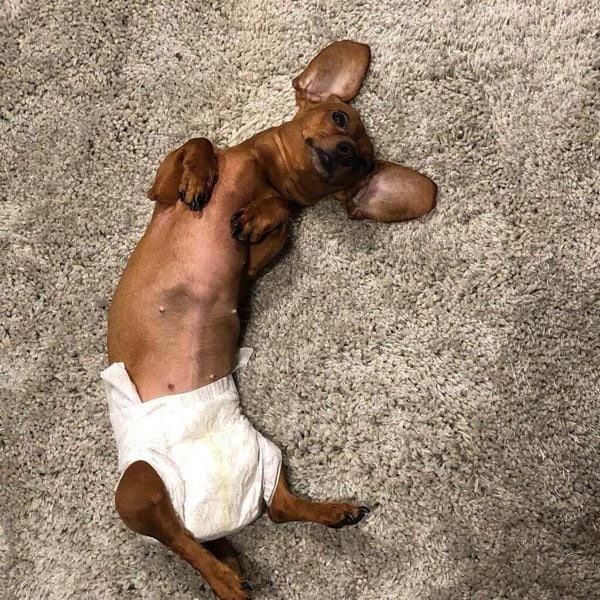
What Is The Ideal Age For Spaying?
Ideally, she should be spayed before her first heat cycle, so that should be around the 8th week of age. One of the benefits of spaying her early in life is to eliminate the unwanted behaviors that are associated with the heat cycle.
If your dog has practiced these unwanted behaviors (e.g. aggression and irritability) for months or even years, these behaviors may persist even after she has been spayed.
However, age should not stop you from spaying your dog. Even if you cannot get rid of those heat cycle-related behaviors, you might see them less often. In this case, spaying an older dog is done 2 to 3 months after her heat cycle.
However, if you want to breed her, it’s good to know how many times it is safe for your dog to get pregnant in her lifetime.
How Many Times Should You Breed A Female Dog?
The best time to start breeding your female dog is after her second or third heat cycle. By this time, your dog is already fully grown and is mature enough to care for her litter.
What we do not recommend for you is to breed her each time she goes through her heat cycle, as this causes a tremendous amount of stress or physical strain on her body.
Having said that, the ideal and safe interval to breed her is every other heat cycle until the age of 5 to 7 years old.
Is It Possible For A Dog To Never Go Into Heat?
Yes, it is possible for your dog to never go into heat and the cause can either be abnormal heat or an irregular heat cycle.
Abnormal heat cycles can include silent heat, split heat, or absent heat. On the other hand, the irregular heat cycle can be a result of malnutrition, genetic disorder, hypothyroidism, and other health issues.
Silent Heat
A silent heat happens when your dog goes through the normal process of her heat cycle except that she is not manifesting symptoms like bloody vaginal discharge. If this is the case, your dog can still get pregnant because male dogs can detect silent heat.
Split Heat
This happens when your dog goes through the proestrus phase (first phase) and then stops just before the start of the estrus phase (second phase) of the heat cycle. It is typical for a dog to go into heat again within 3 to 4 weeks and experience a normal heat cycle.
Split heat is a common issue among younger dogs that will eventually resolve on its own. However, persistent split heat is not normal and may be a result of hypothyroidism disorder.
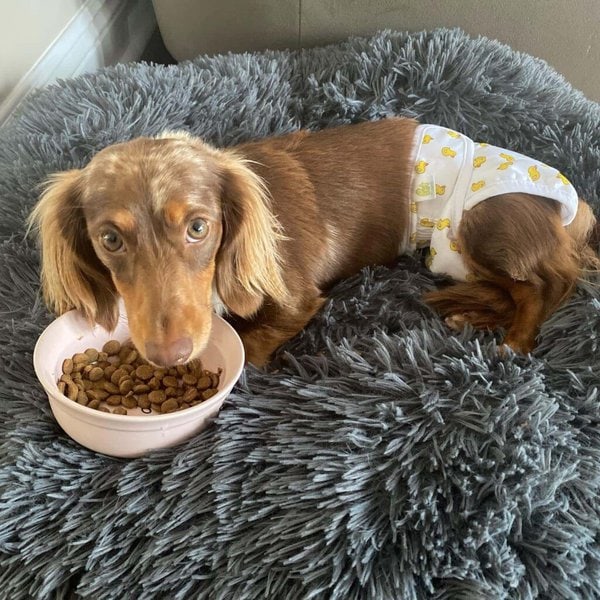
Absent Heat
This refers to a dog totally missing her heat cycle. Though absent heat can be common among younger dogs, this shouldn’t happen among mature dogs that have normal heat cycles before.
The possible explanations for absent heat among mature dogs are disease in the reproductive system, malnutrition, poor health, or caused by medicine that interferes with fertility.
Malnutrition
Did you know that a poor diet can affect the fertility of your female dog? Feeding your dog with dog food that is low in fat and protein can cause your dog not to go into heat. If you’re planning on breeding her, be sure to feed her with nutritious food so her body can produce the necessary level of estrogen for a normal heat cycle.
Hypothyroidism
This endocrine disorder causes a dog to not go into heat. For some dogs, they may have irregular heat cycles but for some, they will not cycle at all. This is a genetic condition and dogs with hypothyroidism shouldn’t be bred.
Ovarian Hypoplasia
This health problem results in underdeveloped ovaries that inhibit a dog’s body from producing a healthy amount of estrogen for proper heat cycling. In addition, both the vulva and the mammary glands remain small and underdeveloped.
How Do Male Dogs Act Around Females In Heat?
When a sexually mature male dog is near a female dog in heat, you will see a dramatic change in its behavior. Some of these behaviors include an urge to go out to look for that female dog in heat, increased urine marking, aggression, and a lack of focus.
As a fur parent, what can you do then to calm down the behavior of your sexually charged male dog? What are the circumstances that cause sexual frustration? Let’s delve deeper into the sexual behavior of your male dog.
The Strong Urge To Go Out
You may observe your male dog frantically wanting to escape from the house because he can smell the urine of a female dog in heat.
As mentioned earlier, a female dog in heat urinates more frequently as a way to invite male dogs for mating. This urine is full of hormones that denote sexual readiness. This is why you’d observe your dog terribly wanting to go out and be with a willing female partner.
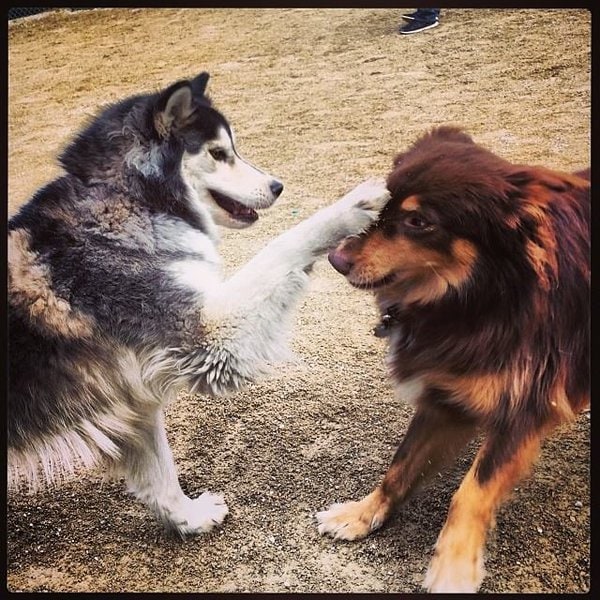
Increased Urine Marking
Urine marking is not exclusive to a female dog in heat. A male dog can get too excited in the company of a female dog that he’d also respond by urine marking.
Aggression
If two male dogs are around a female dog in heat, expect nothing but frequent battles. They would act aggressively towards each other as both of them fight for their rights to mating.
Lack Of Focus
Too much sexual excitement is the reason why a male dog loses focus. It may not show any interest in eating and sleeping. He can’t think of anything else but mating.
These behaviors can be stressful not only to you but to your male dog as well. But, there are things you can do to tame down his super-charged sexual behaviors.
How Do You Calm Down A Male Dog When A Female Is In Heat?
- Keep your dogs as far away as possible from each other. The idea is to stop your male dog from smelling her urine.
- If you have limited rooms, you may want to keep one indoor while the other is outdoor.
- If you have the budget, the best thing to do is to board your male dog in a kennel until her heat cycle ends.
Do Male Dogs Get Sexually Frustrated?
Yes, male dogs do get sexually frustrated. If their sexual arousal is hampered, male dogs would vent off their sexual frustrations through humping.
This is the reason why it’s common to see male dogs mount the legs of their humans and go through the motion of sexual acts. Some dogs may even hump on their favorite stuffed toys.

